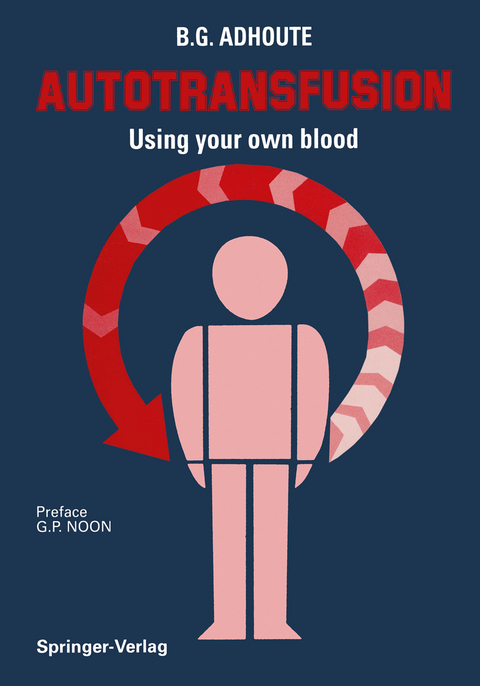
Autotransfusion
Using your own blood
Seiten
2012
Springer Editions (Verlag)
978-2-8178-0917-5 (ISBN)
Springer Editions (Verlag)
978-2-8178-0917-5 (ISBN)
The practice of autologous blood collection and transfusion has been steadily increasing. Homologous blood transfusion is easy and has allo wed us to salvage lives and perform procedures which would not have been feasible without the availability of whole blood or its components.
The practice of autologous blood collection and transfusion has been steadily increasing. The concept is not new; however, its application has been limited because of lack of interest and willingness to make the extra effort required. Also there has been concern about the safety of the procedure. Homologous blood transfusion is easy and has allo wed us to salvage lives and perform procedures which would not have been feasible without the availability of whole blood or its components. Transfusion with homologous blood products is safe; however, com plications can and do occur. The transmission of AIDS by transfusion of homologous blood products has significantly increased patient and physician awareness of the dangers one faces. This potential complica tion has promoted autotransfusion. It is now commonly used and reques ted by patients and physicians. Blood for autotransfusion is collected pre or intraoperatively by phle botomy and retrieved intra and post operatively from sites of hemor rhage. Once collected, the blood is either stored or returned to the patient as whole or processed blood. To have a successful autotransfusion program requires anticipation of its needs and coordination and training of involved personel in the blood bank, emergency room, operating room and post-surgical care units. Pre deposit and processing of collected blood requires remission of donor criteria and labeling and storage procedures.
The practice of autologous blood collection and transfusion has been steadily increasing. The concept is not new; however, its application has been limited because of lack of interest and willingness to make the extra effort required. Also there has been concern about the safety of the procedure. Homologous blood transfusion is easy and has allo wed us to salvage lives and perform procedures which would not have been feasible without the availability of whole blood or its components. Transfusion with homologous blood products is safe; however, com plications can and do occur. The transmission of AIDS by transfusion of homologous blood products has significantly increased patient and physician awareness of the dangers one faces. This potential complica tion has promoted autotransfusion. It is now commonly used and reques ted by patients and physicians. Blood for autotransfusion is collected pre or intraoperatively by phle botomy and retrieved intra and post operatively from sites of hemor rhage. Once collected, the blood is either stored or returned to the patient as whole or processed blood. To have a successful autotransfusion program requires anticipation of its needs and coordination and training of involved personel in the blood bank, emergency room, operating room and post-surgical care units. Pre deposit and processing of collected blood requires remission of donor criteria and labeling and storage procedures.
Hemodilution.- Deferred autotransfusion.- Peroperative autotransfusion.
| Zusatzinfo | 149 p. |
|---|---|
| Verlagsort | Paris |
| Sprache | englisch |
| Maße | 170 x 244 mm |
| Themenwelt | Schulbuch / Wörterbuch |
| Medizinische Fachgebiete ► Innere Medizin ► Hämatologie | |
| Naturwissenschaften | |
| Sozialwissenschaften | |
| ISBN-10 | 2-8178-0917-3 / 2817809173 |
| ISBN-13 | 978-2-8178-0917-5 / 9782817809175 |
| Zustand | Neuware |
| Haben Sie eine Frage zum Produkt? |
Mehr entdecken
aus dem Bereich
aus dem Bereich
Hämatologie und Internistische Onkologie
Buch | Softcover (2023)
ecomed-Storck GmbH (Verlag)
CHF 179,95
Buch | Softcover (2024)
Urban & Fischer in Elsevier (Verlag)
CHF 73,00


